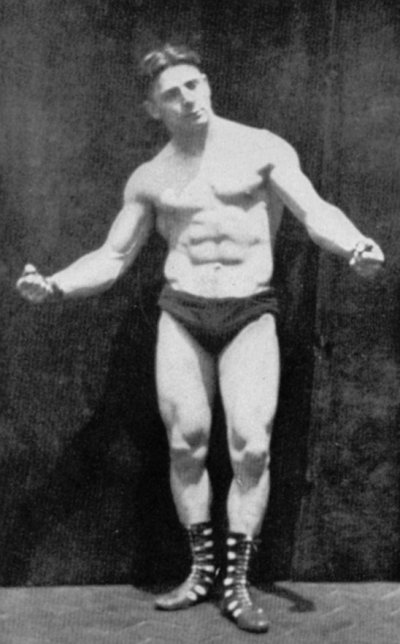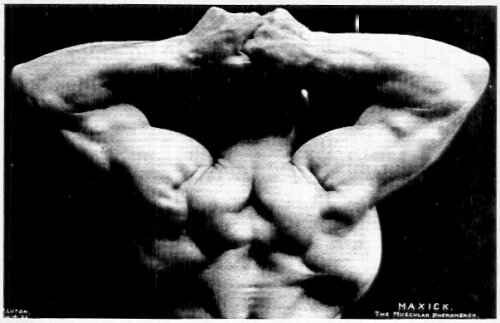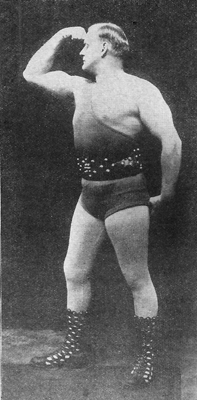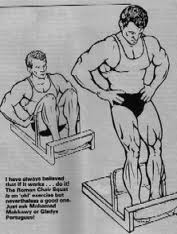Siegmund Klein, A man of Two Eras
by Dennis Mitchell
Siegmund Klein was born on April 10, 1902, in Kronisberg Germany, also known as West Prussia. His family moved one year later to Cleveland Ohio. He still has family living in the greater Cleveland area. Siegmund was never a 97 pound weakling and was a sturdy healthy child. His father was a strong and muscular man, and Siegmund said he got his desire to be strong and well built from his father. At age 12, his first set of dumbbells were two discarded iron weights used to counter balance the raising of windows. He got his first set of real weights when he was 17, and trained in his secret attic gym. Siegmund was a true All-Rounder, not only doing the standard lifts but the odd lifts as well. He was a physique man, an excellent poser, and muscle control artist. He was an admirer of Professor Louis Attila, the man who invented the Bent Press. The Professor died before Siegmund could meet him. However he did meet his widow and with her permission took over running the gym which was located in New York City. He also married their daughter Grace. He eventually opened his own gym. His gym was a show place known through out the weightlifting world. It was equipped with the old time globe barbells and dumbbells.
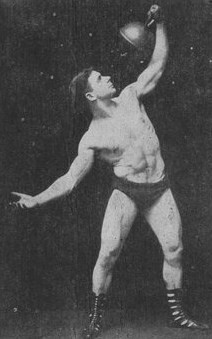
Sig Klein was also a very accomplished tumbler and hand balancer. Klein owned and ran one of the most popular gyms of all-time in New York City for over 50 years.
He is credited with inventing some new equipment – the “Feet Press Machine, The Iron Boot, and the ‘In-Klein’ Board”. Somehow he managed to be friendly with the two barbell super powers – Bob Hoffman’s York Barbell Club, and Joe Weider’s IFBB organization. He wrote articles for both organizations and was not only written about in their magazines but his photographs were on their magazine covers. He also was on the covers of Iron Man, Vim Magazine, LaCulture Physique, and Macfadden’s Physical Culture Magazine. He even published his own magazine, The Klein’s Bell, from June 1931 to December 1932. After that he wrote for Hoffman’s Strength & Health magazine. He was inducted into Joe Weider’s Bodybuilding Hall of Fame in 2006. At a body weight of between 147 to 150 pounds he did the following lifts: Strict military press 229.25 pounds, strict press behind head 206 pounds, one arm snatch 160 pounds, one arm clean and jerk 190.5 pounds, crucifix 126.75 pounds (total), alternate dumbbell press with two 100 pound dumbbells for ten reps, a bent press of 209 pounds and a side press of 174 pounds. He also did 10 reps with 300 pounds in the deep knee bend. Notice that I did not say squat, as in his day they were done on your toes, not flat footed. The Association of Old Time Barbell and Strongmen began with a birthday celebration for Siegmund. It was so well received that they have been meeting yearly since then. Siegmund Klein passed away May 24,1987. The end of an era.
